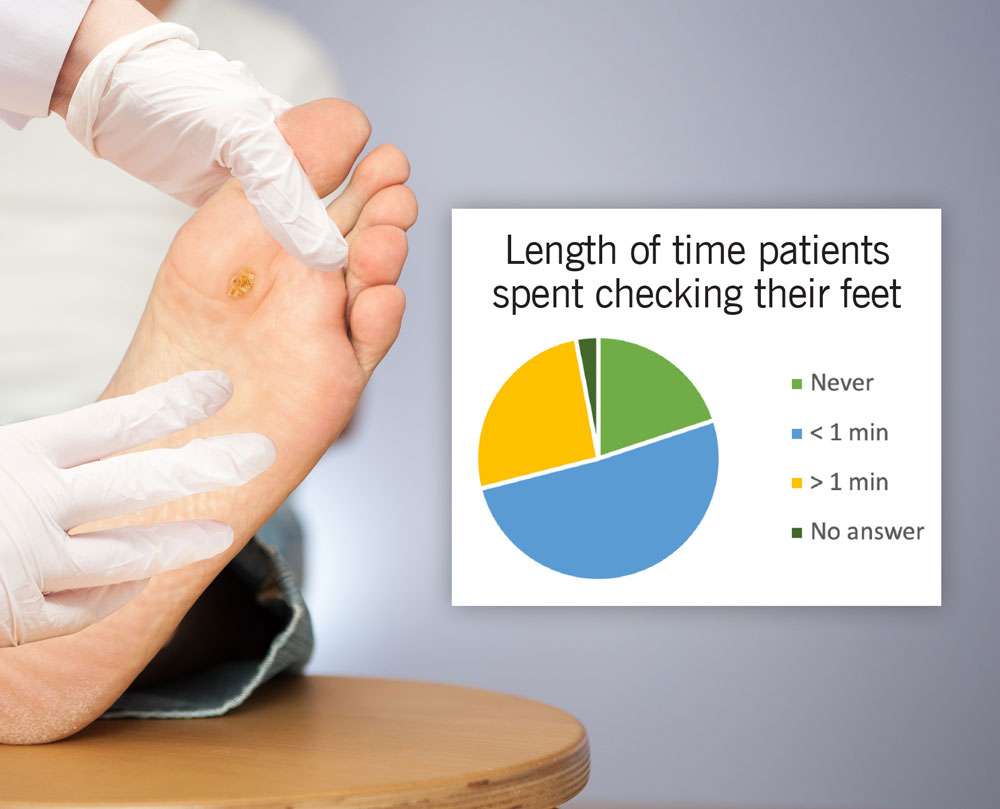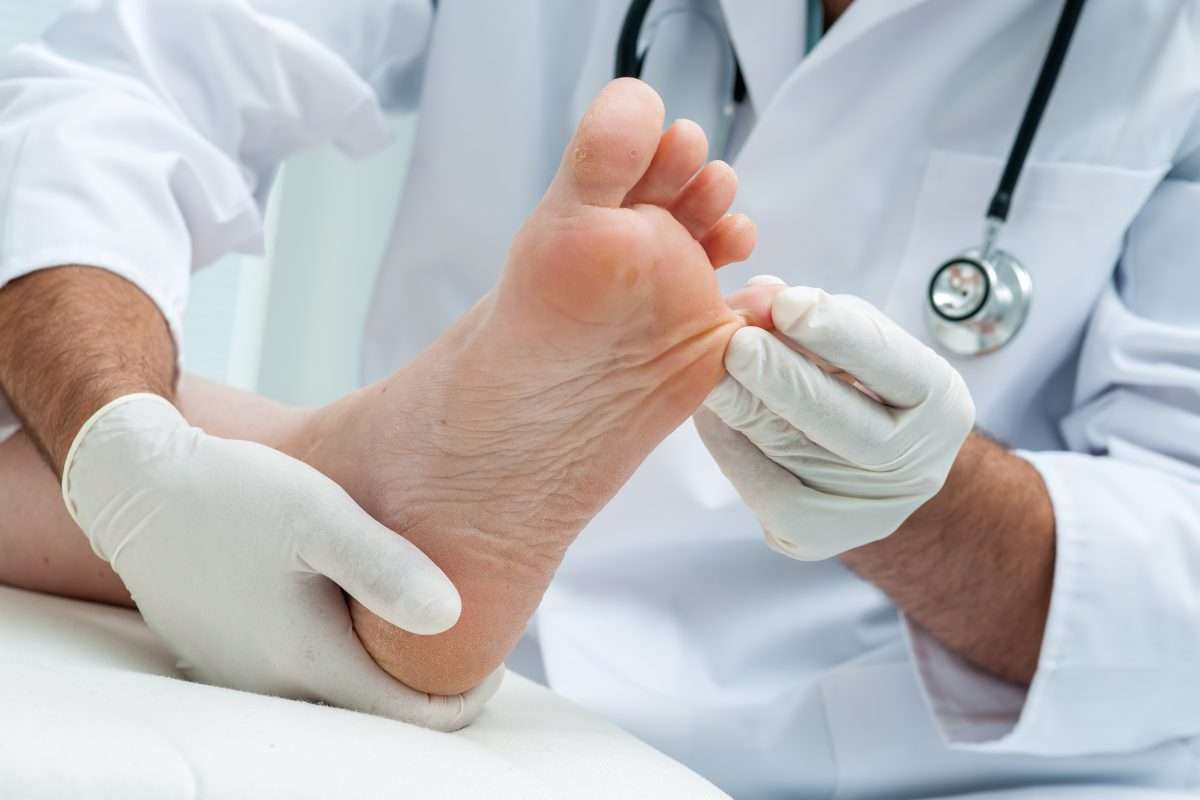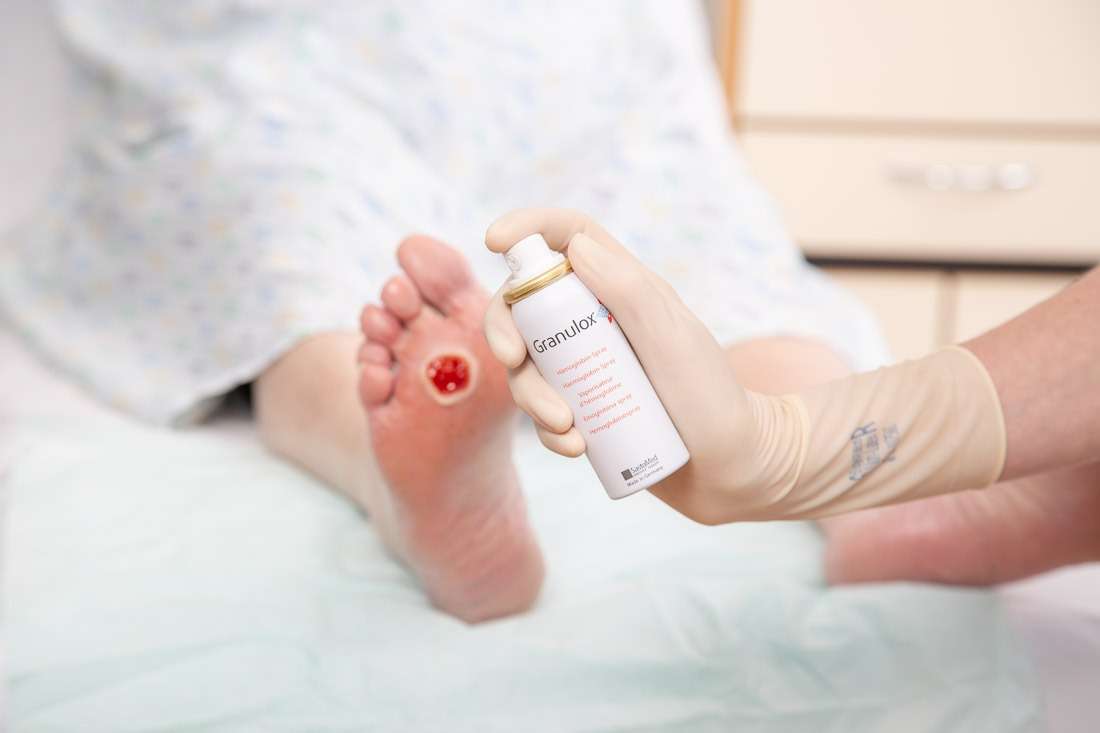Wound Care Centers Can Help Foot Ulcer Patients With:
- Debridement: An innovative way to heal ulcer wounds is to remove dead skin and tissue around the wound for the body to continue healing the infected area.
- Wound Offloading: the best thing to do for a wound is to remove any excess weight and pressure to allow healing. This can be done with wheelchair use, crutches and specialized medical foot gear.
- Wound Dressing: There are specialized wound dressings that can go over the wound to heal with either special healing collagen or antibiotic medication to prevent infection. This will be wrapped within every visit to a wound care center.
- Hyperbaric Oxygen Therapy: One of the most highly underrated wound care treatments out there is hyperbaric oxygen therapy. Hyperbaric oxygen therapy is exactly what you hear, oxygen therapy while in a chamber. This is a normal use for foot ulcers and it is shown to heal wounds at a rate of 80% faster than regular treatment. Inside a Hyperbaric chamber you take in 100% oxygen towards the areas in your body that are oxygen deprived and help your body heal at a faster pace because of the oxygen concentration. This treatment also helps kill bacteria in these infected wounds.
- Wound Surgery: You can close the wound with surgery and improve blood flow to the area of any damaged veins or arteries with surgical revascularization.
Are You At Risk For A Foot Ulcer
-
Do you have a foot deformity? If so, you may have a higher than average risk of a foot ulcer.
-
Do your shoes rub the wrong way? Poorly fitting shoes are a leading cause of foot ulcers.
-
Can you feel your feet? Diabetes can cause nerve damage to the feet, making it difficult to feel cuts or scratches.
-
Do you have high blood pressure? You may not realize it, but controlling your blood pressure could actually help protect your feet as well as your heart.
-
Have you had a foot ulcer before? If so, youre at higher risk of having another one. Check your feet daily and call your doctor at the first sign of an injury.
-
Do you go barefoot? Wearing shoes both inside and outside can help protect your feet from injury.
-
Can you see your feet? People who are overweight or have diabetic eye disease should ask a family member or caretaker to examine their feet every day.
-
Do you smoke? Ask your doctor for help quitting. Your feet will thank you.
Do Not Completely Cut Down On Iodine
Many people who suffer from diabetes give up consuming iodine with the fear of increased insulin resistance. But in actuality, some amount of iodine is essential for your body. Iodine is even helpful in enhancing the healing process of diabetic foot ulcers. Thus, there is no harm in including some iodine in your diet to treat the problem of diabetic foot
Recommended Reading: Ulcerative Colitis Weakness And Fatigue
Royal Jelly/honey Bee Milk To Hasten The Healing Of The Ulcer
When it comes to wound healing, the type of dressing used plays a crucial role. Recent studies have shown that Royal jelly when used for dressing diabetic foot wounds, can have miraculous effects. Royal jelly has antioxidant, antibacterial, and anti-inflammatory properties. Therefore, it reduces the pain while protecting the wound from infections. Royal Jelly also increases the rate of cell growth, thereby aiding faster healing of the wound. Thus, it is the most favored home treatment for diabetic foot ulcers.
Keeping Your Feet Healthy

Patients with diabetes must be diligent about wound prevention. The first step is properly managing the diabetes itself which includes maintaining a balanced diet and exercise routine, keeping blood glucose levels in the recommended range, avoiding alcohol and tobacco, and addressing any co-occurring disorder such as cardiovascular disease or obesity.
The next step is to commit to daily skin inspections, and especially your feet when sensation is impaired, Estocado said. This inspection should be thorough, and include the sole, sides and in between the toes. Even the smallest blister or scrape can escalate for diabetic patients, so call your doctor at the first discovery of any abnormality.
Don’t Miss: How To Calm Down An Ulcerative Colitis Flare Up
Leg Washing And Wound Dressings Home Application And Treatment During The Coronavirus
Part of the secret to getting this done well, is to prepare everything before you start. You will need:
- A bowl which is large enough to fit your foot in filled with clean, warm water
- A dressing pack and gloves
- Non scented moisturiser or emollient cream. Remember if you have been advised to use a steroid cream you should apply this as you have been previously directed by your nurse or specialist
Once you have everything together and you are ready to change your dressing, first watch the film below, which takes you through the whole process.
We would like to thank Alison Schofield for making this short video available to us.
Please remember that a dressing can stay in place for up to 7 days unless it becomes loose, leaks or becomes uncomfortable.
Pay Attention To Your Feet
If you have diabetes, it is important to conduct daily foot inspections. Catching a sore in the early stages can go a long way in preventing further damage or more serious problems. If you cant see the bottoms of your feet, put a mirror on the floor and hold each foot over it. It is also beneficial to regularly change socks & shoes, moisturize the feet, and wear comfortable shoes. Additionally, use foot-cleansing products that inhibit bacterial or fungal growth.
Recommended Reading: How Do They Test For Ulcers
Who Can Get A Diabetic Foot Ulcer
Anyone who has diabetes can develop a foot ulcer. Native Americans, African Americans, Hispanics and older men are more likely to develop ulcers. People who use insulin are at a higher risk of developing a foot ulcer, as are patients with diabetes-related kidney, eye, and heart disease. Being overweight and using alcohol and tobacco also play a role in the development of foot ulcers.
What Is A Diabetic Foot Ulcer
A diabetic foot ulcer is an open sore or wound that occurs in approximately 15 percent of patients with diabetes, and is commonly located on the bottom of the foot. Of those who develop a foot ulcer, six percent will be hospitalized due to infection or other ulcer-related complication.
Diabetes is the leading cause of nontraumatic lower extremity amputations in the United States, and approximately 14 to 24 percent of patients with diabetes who develop a foot ulcer have an amputation. Research, however, has shown that the development of a foot ulcer is preventable.
Recommended Reading: Foods For Gerd And Ulcers
Insurance Coverage For Pure Oxygen Treatment Is Limited But Expanding
The Food and Drug Administration considers the oxygen delivery product, a class II medical device, to which it granted premarketing clearance in 2009.
The therapy is available now in limited areas of the country but the company is working to gain broader availability, says Mike Griffiths, DProf, CEO and medical director of AOTI Inc. based in Oceanside, California, and Galway, Ireland.
This therapy is now prescribed in Veterans Administration facilities, he says, and ”we have approval for New York State Medicaid reimbursement.” He declined to provide the cost to a patient who doesnt have insurance coverage, but he says the new study results is expected to help the company get broader healthcare coverage from Medicare and other insurers soon.
What Should I Watch For
Take a moment each day to look at your feet. Find a well-lit area, perhaps under a lamp or in the bathroom, and look closely at your entire foot especially the tips of your toes and the bottoms of your feet. If you aren’t able to see your feet, ask a family member or caretaker to check them for you.
If you notice a callous, blister, drainage on your sock, an area of redness or a patch of skin that remains warmer than the surrounding areas long after you’ve removed your shoes, contact your doctor. Your doctor may clean the wound, remove any dead tissue, apply a clean bandage, treat any infection and advise you to stay off of your foot as long as possible. Left untreated, foot ulcers are a leading cause of foot amputations in people with diabetes.
Also Check: How Do You Cure Ulcerative Colitis
Caring For Wounds And Foot Ulcers In Diabetic Patients
The Centers for Disease Control and Prevention reports that there are 30.3 million people living with diabetes in the United States. Diabetes comes with many serious complications, including chronic wounds, nerve damage and foot ulcers.
The American Podiatric Medical Association reports that 15 percent of diabetic patients will develop a foot ulcer. Further, diabetes is the leading cause of nontraumatic, lower-extremity amputations in the U.S. caused by infected wounds and foot ulcers that cannot heal. While difficult to treat, foot ulcers often can be prevented.
Controlling risk factors and monitoring the skin daily is key to minimizing the negative effects of diabetes, said Nancy Estocado, Advanced Wound Care Clinical Coordinator at Sunrise Hospital and Medical Center. For anyone with diabetes, understanding how to prevent and properly address wounds especially foot ulcers is integral to living a healthy life.
What To Look Our For When Applying Compression Bandaging Wrap Systems Or Hosiery

If youre using a wrap system, wear supportive stockings or tights or use compression bandaging (compression bandaging is normally only applied by your nurse or healthcare professional, here are some things to look out for:
- Does your footwear still fit the same if your footwear is tight it may mean that the swelling has increased?
- Does the bandaging, wrap or hosiery feel firm and supportive?
- Is your skin red and inflamed?
- Is your skin dry and flaky?
- Is your skin white and soggy like youve just come out of the bath?
- Do you have eczema or another skin condition that requires specific creams or ointments?
If you have concerns with any of the above, please get in touch with your healthcare professional for advice.
Also Check: Can Diverticulitis Cause Ulcerative Colitis
What Are The Types Of Ulcers
There are two types of ulcers that can affect your feet and toes:
- Neurotrophic ulcers.
- Arterial ulcers.
Diabetics can get neurotrophic ulcers. Neurotrophic ulcers can be found anywhere on your feet, but theyre usually on pressure points on the bottoms of your feet. The base, or middle of the ulcer, can look different from person to person. It changes because the appearance depends on your circulation. A neurotrophic ulcer can appear pink, red, brown or black or a combination of these colors. The borders of the ulcers are punched out while the surrounding skin is often calloused.
Anyone can get an arterial ulcer. The word arterial means relating to arteries. Arteries are blood vessels that transport blood from your heart to the rest of your body, including your feet and toes. Arterial ulcers appear on your heels, the tips or your toes, between your toes where they rub against one another and anywhere your bones may protrude and rub against bed sheets, socks or shoes. They also occur commonly in the nail bed if your toenail cuts into the surrounding skin or if you had recent aggressive toenail trimming or an ingrown toenail removed.
Treatment For Diabetic Foot Ulcers
If a diabetic foot ulcer does occur, its important to seek medical care as soon as possible this is not a wound you should attempt to treat at home on your own. The faster a foot ulcer is properly treated, the greater chance it will heal completely and without infection or complications.
A diabetic wound care specialist, such as the Wound Care Center at Harrington, can provide the most advanced and comprehensive diabetic wound treatment. Your primary care physician can provide a referral to the wound care center. Our Wound Care Center team will then continue working hand-in-hand with your doctor throughout the wound treatment process.
Our specialized diabetic wound treatment services include:
Recommended Reading: How To Tell If You Have A Stomach Ulcer
Home Remedies For Foot Ulcers
Ask U.S. doctors your own question and get educational, text answers â it’s anonymous and free!
Ask U.S. doctors your own question and get educational, text answers â it’s anonymous and free!
HealthTap doctors are based in the U.S., board certified, and available by text or video.
Swelling In The Legs And Ankles
Venous leg ulcers are often accompanied by swelling of your feet and ankles , which is caused by fluid. This can be controlled by compression bandages.
Keeping your leg elevated whenever possible, ideally with your toes above your hips, will also help ease swelling.
You should put a suitcase, sofa cushion or foam wedge under the bottom of your mattress to help keep your legs raised while you sleep.
You should also keep as active as possible and aim to continue with your normal activities.
Regular exercise, such as a daily walk, will help reduce leg swelling.
But you should avoid sitting or standing still with your feet down. You should elevate your feet at least every hour.
You May Like: Is Ibs And Ulcerative Colitis The Same
Taking Pressure Off Your Foot Ulcer
Foot ulcers are partly caused by too much pressure on one part of your foot.
Your provider may ask you to wear special shoes, a brace, or a special cast. You may need to use a wheelchair or crutches until the ulcer has healed. These devices will take the pressure off of the ulcer area. This will help speed healing.
Sometimes putting pressure on the healing ulcer for even a few minutes can reverse the healing that happened the whole rest of the day.
Be sure to wear shoes that do not put a lot of pressure on only one part of your foot.
- Wear shoes made of canvas, leather, or suede. Don’t wear shoes made of plastic or other materials that don’t allow air to pass in and out of the shoe.
- Wear shoes you can adjust easily. They should have laces, Velcro, or buckles.
- Wear shoes that fit properly and are not too tight. You may need a special shoe made to fit your foot.
- Don’t wear shoes with pointed or open toes, such as high heels, flip-flops, or sandals.
What Are Pressure Ulcers
Skin is the largest organ system in the body. The skin is tough and durable to protect the subcutaneous tissue against air, water, foreign matter, and bacteria. Our skin is sensitive to injury and this organ has special healing abilities. However, even with elasticity, skin cannot withstand the excessive pressure, stretching or scrubbing. Continuous pressure on the skin tightens the blood vessels, which are responsible for providing nutrients and oxygen to the skin. When the skin is too long anemic, tissue will die, causing the formation of pressure ulcers. Also known as bedsores or decubitus ulcers, pressure ulcers are a common skin condition people have to cope with.
More specifically, it is one of the major complications of a person with paralysis. For example, according to experts’ estimates, about one third of patients with spinal cord injury will have pressure ulcers in the early days after injury, and about 50-80% of the remaining patients may develop this problem later. Most types of ulcers can be prevented but they may even occur in patients who are well cared for and are supported by appropriate equipment .
To heal these ulcers, the patient needs a lot of time, money and good care. Patients may have to lie down for up to a month because of a pressure ulcer, especially an ulcer due to surgery. All these conditions can cost you thousands of dollars and cause you to lose valuable time for work, school or family.
Read Also: Pressure Relieving Mattress For Pressure Ulcers
Treatment Management & Guidelines
Treatment: People with diabetes have more risk of foot ulcers. Foot ulcers are the main reason for leg amputations worldwide. Immediately treating foot ulcers is therefore necessary. Treatment varies from person to person condition and this includes:
Medication: Medicine treatment includes:
- Antibiotics to control infection of sore or wound
- Anticlotting medicines to reduce blood clots and improve blood circulation
- Diabetic control medicines to control diabetes.
- Painkillers to relieve pain due to foot ulcers.
Surgical options: Surgery may include:
Summary:
Foot ulcer treatment includes antibiotics and anti-clotting medicines, and it may require surgeries for increasing blood flow.
Management: Management of foot ulcers consists of providing relief from the ulcer pain or itching and to stop its growth. This includes:
Summary:
Heal The Diabetic Foot Ulcer With Apple Cider Vinegar

Acetic acid present in apple cider vinegar kills bacteria that prevents the infection from spreading. Therefore, apply apple cider vinegar on the affected areas and let it stay for about 15 minutes. Repeat twice daily for better results.
Note: Articles on Ayurvedum are solely for the purpose of sharing the goodness of Ayurveda and bringing awareness on natural and healthy living. Please do not substitute it for professional medical advice. Ingredients discussed can interfere with certain medications. So, before using anything to treat yourself, always consult an Ayurveda doctor or practitioner.
Also Check: How To Fix A Stomach Ulcer